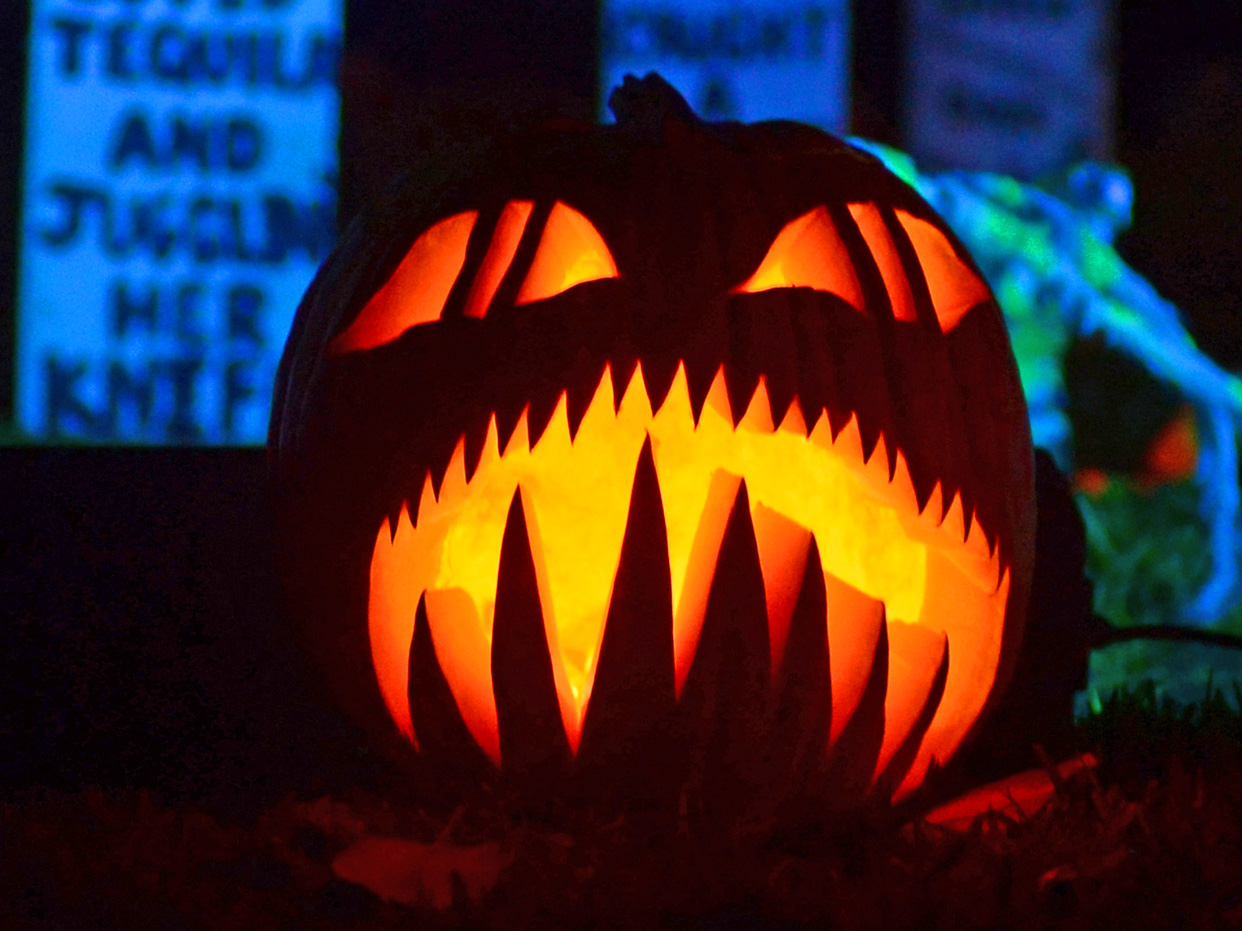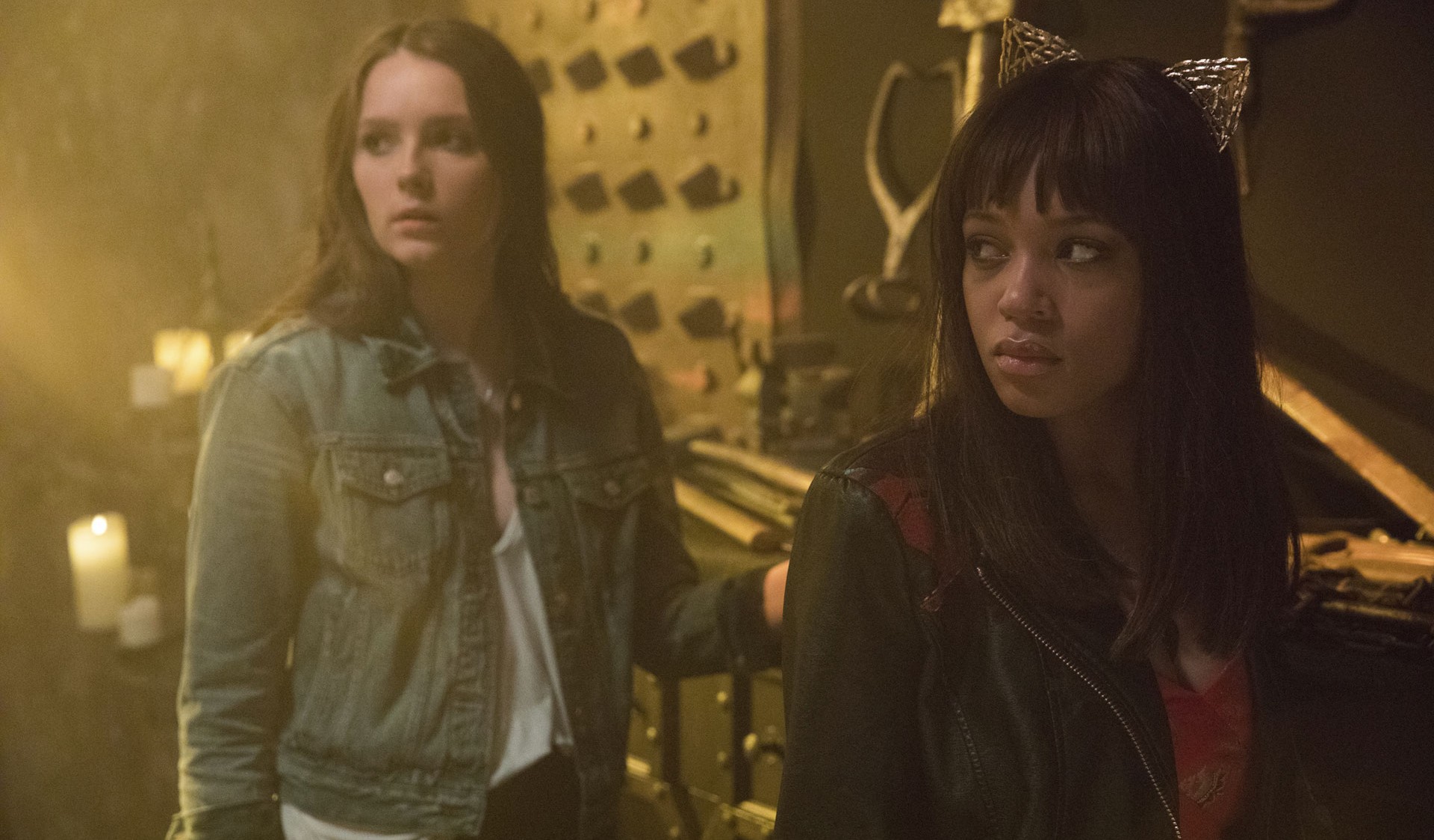Why we celebrate Halloween
From the holiday’s pagan roots to modern traditions around the world

With the long autumn nights closing in and Halloween almost upon us, it’s time once again for Americans to dig out their costumes and candy corn – and for Brits to turn off the lights, draw the curtains and pretend they’re not at home.
But even the grumpiest of Halloween cynics would have to concede that the festival has a fascinating history – one that actually began on this side of the Atlantic.
In recent years “there have been complaints about the ‘Americanised’ event dominating British streets as October comes to an end, with some questioning why we even celebrate Halloween in the UK”, says The Daily Telegraph.
The Week
Escape your echo chamber. Get the facts behind the news, plus analysis from multiple perspectives.

Sign up for The Week's Free Newsletters
From our morning news briefing to a weekly Good News Newsletter, get the best of The Week delivered directly to your inbox.
From our morning news briefing to a weekly Good News Newsletter, get the best of The Week delivered directly to your inbox.
While modern customs may seem baldly commercial, many are older, and much stranger, than you might imagine.
The origins of Halloween
Customs now associated with Halloween have their origins in an ancient Celtic festival called Samhain (pronounced “sow’inn”), meaning summer’s end. The Celts believed this was the time when the veil between this world and the next was at its thinnest, allowing the spirits of the dead to move freely among the living. It was one of the four major seasonal holidays celebrated in Celtic Ireland and Scotland, and took place around 1 November.
Samhain was also a time of stock-taking and animal sacrifice during which pastoral communities prepared to survive the winter, historian Nicholas Rogers, author of Halloween: From Pagan Ritual to Party Night, tells Time magazine.
A free daily email with the biggest news stories of the day – and the best features from TheWeek.com
Around the 8th century, the Christian church began to celebrate All Hallows’ Day (also called All Saints’ Day), placing the holiday on 1 November in an attempt to accommodate pagan practices and thus smooth the path to conversion.
On the night before All Hallows’ Day, which was marked with a feast, Christians would attend a vigil to pray for the souls of the dead and commemorate the saints believed to be in heaven. This event, known as All Hallows’ Eve, became Halloween. By the Middle Ages, this tradition had evolved into an elaborate ritual, with criers dressed in black garb walking the streets to call upon the faithful to pray for the dead – it must have been an unnerving sight to early Christians, lending an eerie tone to the holy day.
Why do we trick or treat?
“Halloween was the one night of the year when communities generally tolerated pranking,” says The Atlantic. However, “the point was to cause mischief, not to gather treats”.
But while Halloween “tricks” may be a venerable tradition, “treats” have far more recent roots.
“Mumming” – going from door to door acting out short skits in exchange for food or drink – was a common form of entertainment during festivals in the Middle Ages, but it did not have a particular association with Halloween.
In fact, trick or treating as we know it did not become a widespread phenomenon in the US until the 1940s. Until then, seasonal fruits such as apples and pumpkins would be a typical offering at a Halloween party.
Mischief Night is still celebrated in many of the UK’s communities, but it has been rapidly eclipsed by American-style festivities since the 1980s.
Other well-known Halloween traditions are much older. Carving vegetables to use as lamps is an ancient practice dating back thousands of years. Halloween Jack O’Lanterns with carved faces were first documented in the 19th century, when they were placed in windows to ward off evil spirits.
The tradition of donning spooky costumes for the festival dates back to the Celts, who disguised themselves to blend in with the ghosts believed to wander the Earth on Samhain, the Gaelic festival marking the end of the harvest season and the beginning of winter.
Halloween in Britain
In Scotland and parts of northern England, Halloween traditionally went by the name of Mischief Night, named after the tradition of dressing up and playing tricks on unsuspecting neighbours. Mischief Night is still celebrated in many of the region’s communities, but recent decades have seen it rapidly eclipsed by American-style Halloween festivities.
Interestingly, however, parts of the north-eastern United States and Canada continue to observe Mischief Night as a separate entity from Halloween, under a variety of regional names such as Cabbage Night, Devil’s Night and Gate Night.
Halloween around the world
While British Halloween celebrations have increasingly followed the American lead, other nations have preserved their own traditions. Often these focus on a celebration of the dead and their effect on the living.
Mexico, Latin America and Spain:
Dia de los Muertos, or the Day of the Dead, is a joyous celebration of lost relatives, who are believed to return to their houses on Halloween.
Famous around the world, this three-day celebration begins on 31 October and involves building an altar at home before decorating it with sweets, flowers, photographs and samples of the deceased’s favourite foods.
Haiti:
People across the Caribbean nation flock to graveyards as part of the annual Voodoo festival of the dead from 1 to 2 November. Voodoo priests and priestesses honour the spirit Guede and their ancestors by lighting candles at their graves and offering them food and chilli-infused rum. Although the holiday celebrates ideas that have existed for centuries, the festival was only made legal in 2003, according to Mic.
China:
The Chinese equivalent of Halloween is Teng Chieh, which celebrates the connections between the living and the dead. Families traditionally place food and water next to photographs of deceased family members, while lanterns and bonfires are lit to guide home the departed.
Japan celebrates its version of Halloween, Obon or Festival of the Lanterns, in August. According to the tradition, dead ancestors return each year to the place where they were born, guided by red lanterns hung in doorways, and released into rivers and seas on the last day of the festival.
Europe:
Different European countries have their own traditions and superstitions when it comes to Halloween. In the Czech Republic, extra chairs are placed by the fireside for the spirits of family members who have died, while Austrians leave bread, water and a lighted lamp out at night to welcome dead souls back to earth.
In certain regions of Germany, families will hide their knives at Halloween to avoid hurting the returning spirits of their deceased friends and families.
Many countries, such as Sweden and Finland, also mark 1 November - All Saints’ Day, when Christian saints and martyrs are remembered. It is also referred to as All Hallows’ Day or Hallowmas, among other names.
Hong Kong:
People in Hong Kong celebrate Yue Lan, or the Hungry Ghosts Festival, which is similar to Halloween, in summer – the date varies each year. Ghosts and spirits are said to roam the world for 24 hours while people burn pictures of fruit or money in order to comfort them.
Philippines:
Pangangaluluwa is a tradition in the Philippines in which children “go door to door, often in costumes, where they sing and ask for prayers for those stuck in purgatory”, Mental Floss reports.
Efforts are now being made to revive the ancient aspects of the festival after many of the traditional rituals have “increasingly been supplanted by trick-or-treating over the years”, the site adds.
Isle of Man:
The tiny Isle of Man will turn its back on Halloween festivities and instead enjoy the ancient Celtic festival of Hop-tu-Naa.
The BBC reports that historically Hop-tu-Naa has been considered to be the Celtic New Year, “marking the end of the summer and the beginning of winter”, and was “traditionally a time when people would celebrate the safe gathering of the harvest”.
The Isle of Man tourism website notes that “back in the olden days, it was customary for children to knock on people’s doors with turnip lanterns and receive pieces of bonnag, herring or potatoes instead of sweets”.
-
 Who is paying for Europe’s €90bn EU loan?
Who is paying for Europe’s €90bn EU loan?Today’s Big Question Kyiv secures crucial funding but the EU ‘blinked’ at the chance to strike a bold blow against Russia
-
 Quiz of The Week: 13 – 19 December
Quiz of The Week: 13 – 19 DecemberQuiz Have you been paying attention to The Week’s news?
-
 What’s causing the non-fiction slump?
What’s causing the non-fiction slump?In the Spotlight Readers are turning to crime fiction, romantasy and self help books as a form of escapism
-
 9 haunted hotels where things definitely go bump in the night
9 haunted hotels where things definitely go bump in the nightThe Week Recommends Don’t fear these spirited spots. Embrace them.
-
 How to make the most of your leftover pumpkins
How to make the most of your leftover pumpkinsThe Week Recommends As the Halloween fun wraps up, snap up pumpkins still on sale and don't leave your jack-o-lanterns to rot
-
 5 new horror movies to jump-scare your way through Halloween
5 new horror movies to jump-scare your way through HalloweenThe Week Recommends A new take on Stephen King classic 'Salems Lot', a spooky take on late-night talk shows, and more
-
 The best horror franchises of all time
The best horror franchises of all timeThe Week Recommends From Freddy to Jason to Michael Myers, who has the greatest horror series of them all?
-
 7 spooky places to visit this October
7 spooky places to visit this OctoberThe Week Recommends These spots are perfect for scaredy cats, ghost hunters and everyone in between
-
 The 9 best Halloween-themed movies to watch this season
The 9 best Halloween-themed movies to watch this seasonThe Week Recommends Get in a festive mood with the help of these great horror films
-
 Movies to watch in October, from 'The Exorcist: Believer' to 'Killers of the Flower Moon'
Movies to watch in October, from 'The Exorcist: Believer' to 'Killers of the Flower Moon'The Explainer Taylor Swift and Martin Scorsese are coming to a theater near you
-
 Halloween drinks: six spooky bottles to get the party started
Halloween drinks: six spooky bottles to get the party startedThe Week Recommends Featuring gruesome glow-in-the-dark and sinister skull-shaped designs